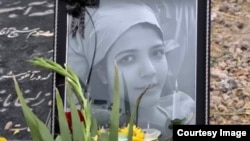
Former Iranian international footballer Ali Karimi says security officials have threatened him and his family over his support for anti-government protesters who have taken to the streets across the country after the death of a 22-year-old woman who was being held in custody for failing to "properly wear" an Islamic head scarf, or hijab.
The Dubai-based Karimi, a former player with Bayern Munich and once the captain of Iran’s national soccer team, said in a tweet on October 24 that he has received indirect threats and has been pressured by security agents over his posts on social media, including on Instagram, where he has nearly 12 million followers.
Sports journalist Mehdi Rostampour recently claimed in a report that security authorities had tried to kidnap Karimi in the port of Fujairah in the U.A.E. through an intermediary. The claim has not been independently confirmed.
Iran is known to have assassinated and abducted multiple exiled opposition figures in the past, including Iranian-German dual citizen Jamshid Sharmahd and journalist Ruhollah Zam.
Karimi has supported the protests -- which have spread across the country -- since they broke out following the death on September 16 of 22-year-old Mahsa Amini while she was held in police custody.
Videos posted on social media on October 24 showed security forces raiding a girls' high school in the center of Tehran amid reports that student protests continue at schools and universities in cities including Tehran, Qom, Sabzevar, Yazd, Karaj, Kerman and Ahvaz.
According to reports, school officials planned to physically search the students and confiscate their mobile phones, which sparked the beating of some students.
In a separate video of a gathering at Qom University, students chanted, "They killed our professors, replaced them with mullahs," in response to the presence of the government spokesman at the school.
At Yazd University in central Iran, students broke the gender segregation rule in the university canteen for the first time, eating together while chanting the slogan, "Women, Life, Freedom."
In the northeastern city of Mashhad, protesters changed the name of Hijab Boulevard to Mahsa Amini Boulevard.








